Overview of screw sizes
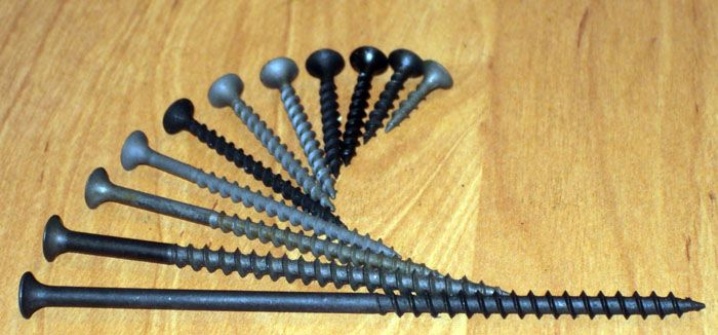
Screw Is a fastener that is a type of screw. It is made in the form of a rod with an external thread, the ends are a head on one side and a cone on the opposite side. The thread profile has a triangular shape, in contrast to the screw, the thread pitch of the screw is larger.
The following materials are used for the manufacture of screws:
- brass and other copper alloys;
- stainless alloys;
- steel with special treatment.

It is the material from which the fasteners are made that determines its quality. There are several types of screws according to the processing method.
- Phosphated. The phosphate layer gives the items a black color. Weakly resist moisture and are prone to corrosion. Used for dry installation.
- Oxidized. The coating gives the screws a shine. The oxide layer increases the resistance to corrosive processes. Suitable for use in damp locations.
- Galvanized. They have a white or yellow tint. They can be used in any field.
- Passivated. Such products are characterized by a pronounced yellow color, which is obtained as a result of treatment with chromic acid.

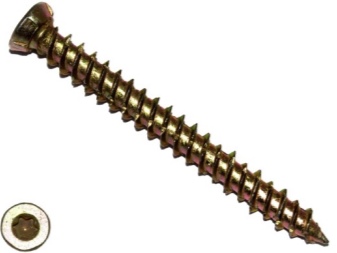
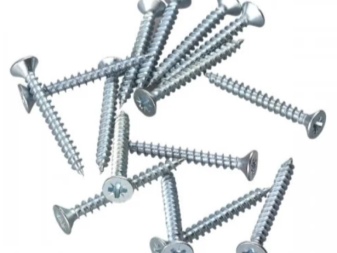
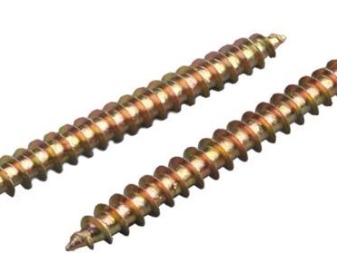
Standard sizes
The parameters that determine the size of the screw are diameter and length... The diameter of the product is determined by diameter of the thread circle. The main dimensions of all screws produced are standardized by the following documents:
- GOST 114-80, GOST 1145-80, GOST 1146-80, GOST 11473-75;
- DIN 7998;
- ANSI B18.6.1-1981.
Screw length and diameter are selected based on the expected load on the connection. In addition, by choosing the diameter of the product, you should pay attention to the recommendations of the manufacturer of the dowels, which are indicated on the packaging... The head of the screw after screwing into the dowel should protrude a short distance. Another factor is thread and its pitch. It is worth remembering that the M8 thread, for example, can have a different pitch.
The sizes of the screws range from the smallest to the track screws, measuring 24x170.
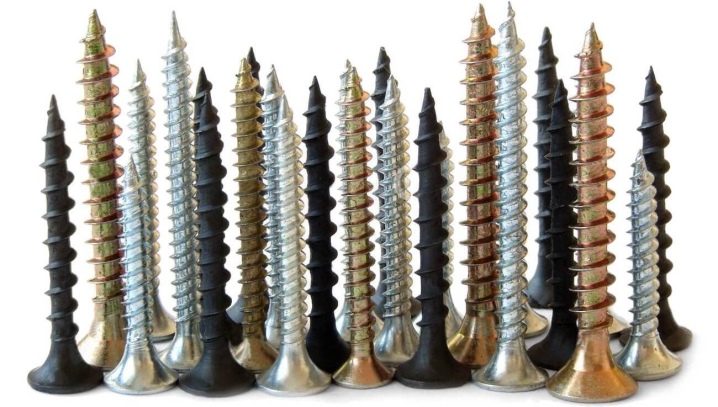
Let's consider the most common types of screws and their typical sizes.
With a semicircular head
They are used when working with wood, plywood or chipboard. The length varies from 10 to 130 mm, the diameter is from 1.6 to 20 mm.
The size range looks like this (in millimeters):
- 1.6x10, 1.6x13;
- 2x13, 2x16, 2.5x16, 2.5x20;
- 3x20, 3x25, 3.5x25, 3.5x30;
- 4x30;
- 5x35, 5x40;
- 6x50, 6x80;
- 8x60, 8x80.


Crutch (ring, half ring)
They are used for laying electrical circuits, fastening construction equipment, equipping sports halls and similar facilities.
The standard size can be as follows (in millimeters):
- 3x10x20.8, 3x30x40.8, 3.5x40x53.6;
- 4x15x29, 4x25x39, 4x50x70, 4x70x90;
- 5x30x51.6, 5x50x71.6, 5x70x93.6;
- 6x40x67.6, 6x70x97.6.
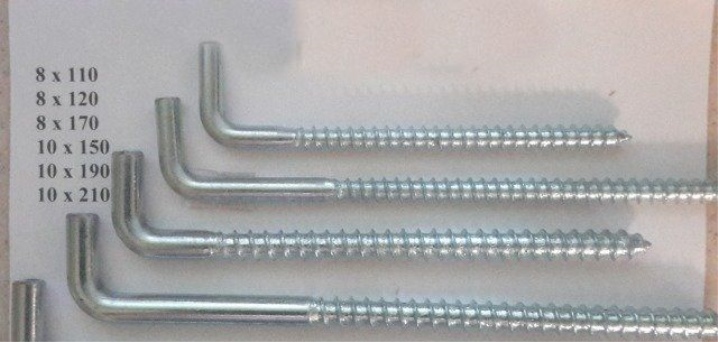
Plumbing
A distinctive feature of this type is the hexagonal head. It is used for fixing various sanitary ware (for example, toilets) on various bases.
Standard size: 10x100, 10x110, 10x120, 10x130, 10x140, 10x150, 10x160, 10x180, 10x200, 10x220 mm.
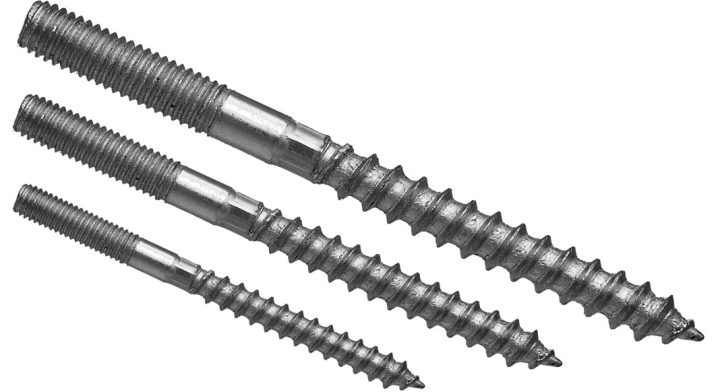
Self-tapping screws
Some of the most common options. It is used in a wide range of works. Size (in millimeters):
- 3x10, 3x12, 3x16, 3x20, 3x25, 3x30, 3x40, 3.5x10, 3.5x12, 3.5x16, 3.5x20, 3.5x25, 3.5x30, 3.5x35, 3.5x40, 3.5x45, 3.5x50;
- 4x12, 4x13, 4x16, 4x20, 4x25, 4x30, 4x35, 4x40, 4x45, 4x50, 4x60, 4x70, 4.5x16, 4.5x20, 4.5x25, 4.5x30, 4.5x35, 4.5x40, 4.5x45, 4.5x50, 4.5x60 , 4.5x70, 4.5x80;
- 5x16, 5x20, 5x25, 5x30, 5x35, 5x40, 5x45, 5x50, 5x60, 5x70, 5x80, 5x90;
- 6x30, 6x40, 6x4, 6x50, 6x60, 6x70, 6x80, 6x90, 6x100, 6x120, 6x140, 6x160, 8x50.

Non-standard options
In addition to the types listed above, there are screws for specific tasks. Specialized products include the following options.
Roofing
They are used for outdoor work when installing various types of roofs to frames. They have a hex head and a sealing washer.
Diameter - 4.8, 5.5 and 6.3 mm. The length ranges from 25 to 170 mm.

Bilateral
Used for concealed installation. Headless, threaded on both sides. Size range (in millimeters):
- 6x100, 6x140;
- 8x100, 8x140, 8x200;
- 10x100, 10x140, 10x200;
- 12x120, 12x140, 12x200.

How to choose?
Using the information provided, the following instructions should be followed when choosing the necessary screws:
- determine what work requires screws and what materials will be used (for example, cable installation, furniture assembly);
- calculate the size of the surfaces to be connected;
- find out in what conditions the proposed compounds or materials are located (humidity, high temperatures, the presence of water).
Given these points, it will be possible to determine the length and the type of fastener required, its coating, thread, and pitch. This will select the optimal screws for the specific task.
An overview of screw sizes in the video below.













The comment was sent successfully.